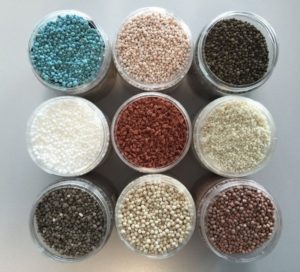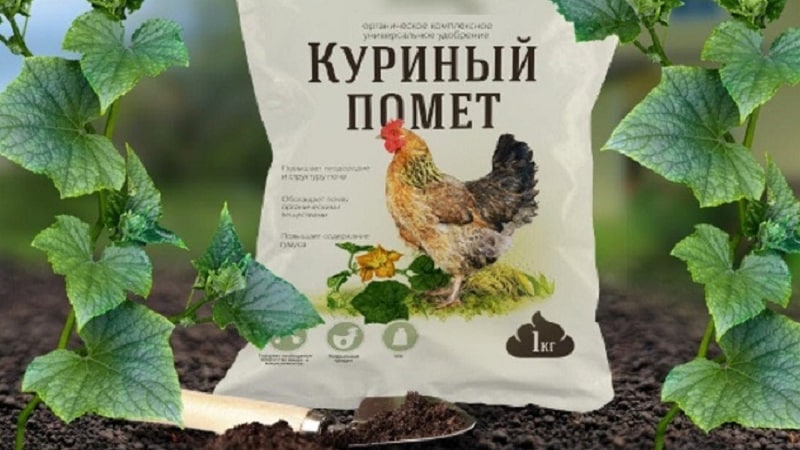How and what to feed honeysuckle after harvesting, how to apply fertilizers correctly
They started growing honeysuckle bushes on plots relatively recently, so many gardeners still make many mistakes. The most common is the lack of fertilizing after harvesting, which occurs in late May - early June. In order for honeysuckle to bear fruit abundantly, it is necessary to provide it with adequate care in summer and autumn.
Why feed honeysuckle after harvesting?

Some gardeners believe that after fruiting, honeysuckle bushes do not need nutrients and can simply grow on the site until next year. However, this opinion is fundamentally wrong. To honeysuckle did not degenerate and continued to bear fruit, it is necessary to fertilize the bushes after harvesting.
Important! Honeysuckle needs feeding after harvest even more than other plants, since the period of fruit ripening in the bush coincides with the first wave of shoot growth.
What does the shrub need during this period?
Like any plant, honeysuckle primarily needs a sufficient amount of potassium, nitrogen and phosphorus. These are the main microelements that ensure the full development of the bush.
Unlike other plants, honeysuckle can and should be fed with nitrogen fertilizers after harvesting, since during this period the second wave of shoot growth occurs.Honeysuckle fruits ripen already at the beginning of summer, so you should not be afraid of the growth of new shoots as a result of feeding - the plant will still have time to prepare for winter.
Potassium also plays a major role in development. In addition to improving taste qualities of fruits, it has many other positive effects on the plant:
- increases resistance to lack of moisture in the soil and air, stabilizing the water balance in the plant;
- improves nitrogen and carbon metabolism in cells;
- activates the processes of photosynthesis and fermentation;
- increases plant frost resistance;
- improves the plant's immunity, making it immune to some fungal diseases.
A sufficient amount of phosphorus is necessary for the development of the root system and the regulation of respiratory processes. Thanks to this microelement, the plant receives the necessary energy, without which there is a lag in development and loss of foliage.
Important! Since young bushes cannot be fed after planting, so as not to burn the fragile root system, the necessary nutrients are placed in advance in the planting hole. This amount of fertilizer should be enough for 2-3 years, during which time the honeysuckle does not need to be fed additionally.
Also, do not forget about regular watering with water at room temperature if honeysuckle grows in a region with dry summers. An adult bush needs 30 liters of liquid once every 10 days.
How to feed honeysuckle after harvesting
After picking the berries, it is necessary to help the plant regain its strength with the help of fertilizing - mineral or organic. Folk remedies for fertilizer are also very popular.
Mineral fertilizers

After picking the berries, it is recommended to feed honeysuckle with nitrogen, potassium and phosphorus. For 1 bush, prepare 3-4 liters of solution according to the following recipe: 15-20 g of potassium sulfide and superphosphate per 1 bucket of water.
On the poor soils You can make a second feeding using the same recipe at the end of summer, before the leaves of the honeysuckle begin to fall.
In July, nitrophoska is used for feeding, which contains all 3 elements necessary for the plant. The fertilizer solution is prepared at the rate of 20 g of the drug per 10 liters of water.
Important! Mineral fertilizers have a wider spectrum of action than organic fertilizers and act faster.
Organic

To feed honeysuckle after harvest, the following types of organic fertilizers are most often used:
- chicken droppings;
- cattle and horse manure;
- peat, silt, compost;
- sawdust and shredded tree bark;
- stems of herbaceous plants, mainly legumes.
Along with the above organic fertilizers, humus and various bacterial preparations are often used, microorganisms in which stimulate the development of the plant’s root system.
Important! Gardeners who prefer organic fertilizers recommend feeding honeysuckle with manure in July at the rate of 10 liters per bush.
Folk remedies
A popular folk remedy for fertilizing honeysuckle is yeast, which accelerates the process of decomposition of organic matter in the soil.
Potato peelings are widely used for feeding, since the starch they contain, especially in combination with ash, has a beneficial effect on the development of the plant.
Important! To extract the maximum amount of starch from potato peels, it is recommended to prepare an infusion: pour boiling water over the peelings in a ratio of 3:4 and leave for 3 days. Strain the resulting liquid and water the bushes with it.For irrigation, you can use the water in which the potatoes were boiled.
In addition to the above remedies, the following are often used:
- Sleeping coffee grounds from natural ground coffee, containing a large amount of nitrogen. Before applying fertilizer, the soil around the honeysuckle must be loosened and well moistened. The liquid is poured into a pre-prepared well at the rate of 100 ml per 1 bush. It is recommended to carry out such fertilizing once every 3 days for 14 days. You can use tea leaves in the same way.
- Aquarium water containing a large amount of nutrients and having a neutral pH level. It is recommended to water honeysuckle 1-2 times after harvesting.
- Banana peel, which is a source of many nutrients. 4 banana skins are dried in the oven, crushed to a powder, add the crushed shell of 1 egg. For 1 liter of water take 2 tbsp. l. powder and 20 g of magnesium sulfate and leave for 3 hours. Spray the bushes early in the morning or evening in dry weather. Repeat the procedure after 1-2 weeks.
How to choose fertilizer
The choice of appropriate fertilizer largely depends on the general condition of the plant, as well as the preferences of the gardener.
If the bush develops normally, it is better to give preference to multicomponent preparations, for example, nitrophoska, for general feeding of the bush. If the appearance of the plant shows a lack of one of the elements, it is necessary to additionally use a one-component fertilizer.
The absorption of nutrients from mineral fertilizers occurs faster and more fully than from organic ones. Thanks to this, their quantity required for one bush is almost half as much.
You can apply fertilizer either at the root or by spraying the leaves. Root feeding, in turn, can be done by watering or by the dry method: scattering in the root zone, mulching, embedding in the soil.
If urea is used for fertilizer, it is evenly scattered around the bush. Compost, green manure and manure are incorporated into the soil during digging.
Important! Organic fertilizers are not mixed with mineral fertilizers. Transferring a plant from one type of fertilizing to another can only be done in the new growing season.
Instructions for applying fertilizers
For foliar feeding, honeysuckle leaves are sprayed with a product prepared from 50 g of urea per 10 liters of water, or a 1% solution of ammonium nitrate - 100 g per 1 liter of water. After 3-4 days, the procedure is repeated.
Another recipe is used for foliar feeding of honeysuckle: 1 tbsp. l. urea and superphosphate, ½ tbsp. l. potassium sulfate per 10 liters of water. This allows you to provide the plant with all the necessary elements at the same time.
Often, foliar feeding is done with microfertilizers containing other elements necessary for the plant, in addition to nitrogen, potassium and phosphorus.
Complex mineral fertilizers in granules are embedded in the soil - 20 g per 1 square meter. m of the root zone. Fertilizing is done every 3-4 weeks until the first yellowed leaves appear on the bush.
Important! When incorporating fertilizers into the soil, it is necessary to remember that the root system of honeysuckle is located just under the surface of the soil, so it is important to be extremely careful when fertilizing.
Organic fertilizers are prepared according to the following recipes:
- 1/3 part of chicken manure is dissolved in 1/2 part water and infused for 2 days. 1 liter of the resulting infusion is diluted with 5 liters of water.Fertilizing is done strictly at the root, avoiding contact with the bush.
- Take 1 bucket of mullein for 5 buckets of water. The resulting mixture is infused for 10 days, stirring daily. It is best to use the resulting infusion for feeding in July and August. Fertilizer is applied in dry, cool weather.

Advice from experienced gardeners
Because the honeysuckle bears fruit early, in regions with warm, sunny autumns, it may bloom again in September. In this case, there will be several very large flowers on the bushes. They are cut off immediately so that the plant does not waste energy and can prepare for a successful winter.
During the period of flowering, formation of ovaries and harvesting, any chemical treatment of honeysuckle bushes is unacceptable.
Conclusion
A bountiful harvest of healthy honeysuckle berries, collected in early summer, should not mislead the gardener about the need to fertilize.
In order for the plant to retain its ability to bear fruit and grow healthy, it is important to regularly care for it and fertilize it throughout the summer.